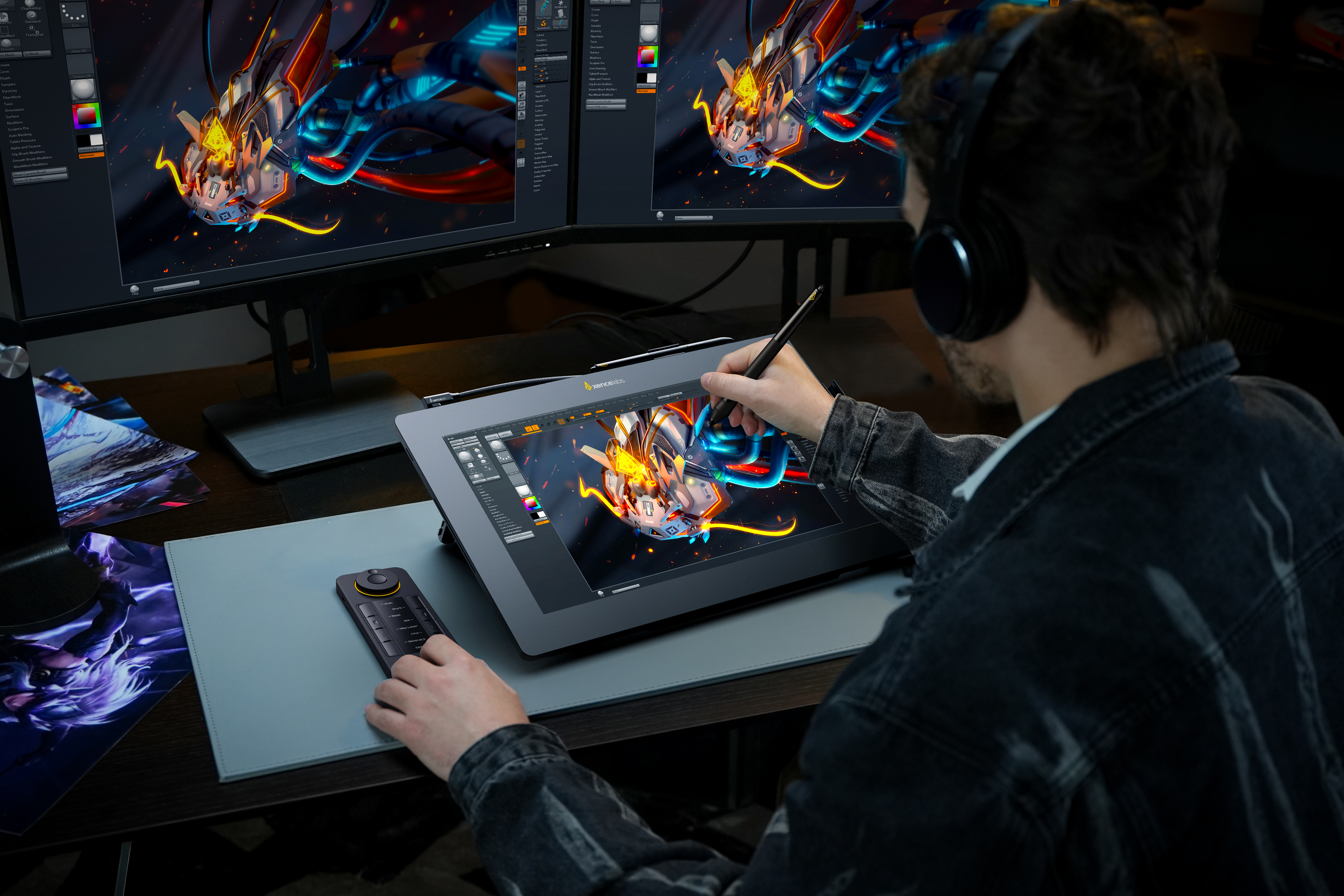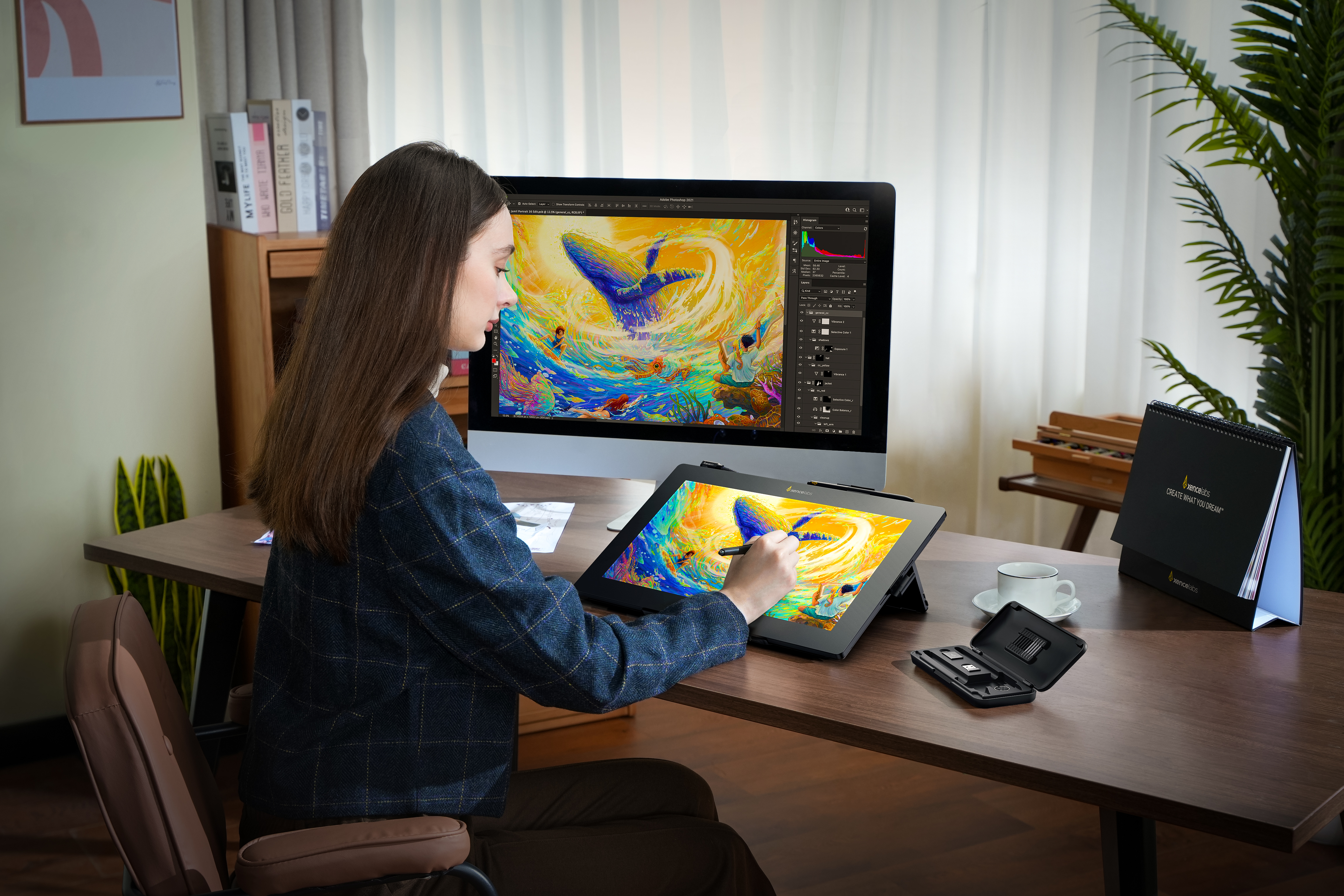There’s a hot new tablet released today, and it’s not an iPad — Xencelabs new Pen Display 16 brings OLED to the Mac
Take macOS to the next level and away from the keyboard.

If you’ve been looking at iMore over the last 24 hours you can’t have failed to notice that Apple has launched brand new iPad Airs and iPad Pros as well as a new Apple Pencil Pro and Magic Keyboard.
Well, hot on the heels of all that iPad action, Xencelabs has chosen today to release its own take on a Mac tablet, the Pen Display 16. Unlike the iPad, this 16-inch, 4K, OLED tablet is designed to run the full macOS in a pen-on-screen environment, but you'll need to bring your Mac to the party to make it work.
For a while now people have speculated that Apple will one day bring macOS and iPadOS / iOS together into one touchscreen extravaganza that runs everything all on one device. However, so far Apple has kept the product lines separate. That hasn’t stopped other companies like Xencelabs from taking up the challenge in weird and wonderful ways.
Enter the PD16. Unlike an iPad, the PD16 doesn't have a touchscreen and it isn’t a stand-alone device; it needs to connect to your Mac via a USB-C cable (HDMI and DisplayPort options are available via a 10-bit hub) to work, but the advantage is that you have your Mac’s entire macOS capability at your fingertips to use with a stylus. Of course, you could also connect it to a Windows or Linux laptop, but who would want to do that?
Hand on glass
The PD16 is aimed at professional digital artists who want to draw directly onto the screen in macOS, rather than onto a trackpad, and it’s been designed with artists in mind. The PD16’s display isn’t touch screen, so you can rest your hand on the glass while sketching without it triggering the OS, making it a very different experience to using an Apple Pencil. There’s also a large bezel around the edge of the screen, which means you can easily get at the very edges of the display without having to shift it around in your lap, or drawing off the edge.
The PD16 comes with two pressure-sensitive pens, which differ quite substantially in design to Apple’s new Apple Pencil Pro. The wider barrel pen has 3 customizable buttons, which you can program for commonly used keyboard shortcuts, and the thinner pen is designed to have the feel of a real pencil or thinner brush. Using the stylus feels more like writing on paper than on glass and both pens come with a pressure sensitive eraser.

Also worth mentioning is that the PD16 comes with a wireless Quick Keys accessory, which contains five customizable groups of eight keys, which you can assign differently for every single application you use. Xencelabs already makes a 24-inch version of the Pen Display, with the new 16-inch version designed to be more portable, so you can use it in multiple locations by plugging into whatever Mac is already at the location.
Master your iPhone in minutes
iMore offers spot-on advice and guidance from our team of experts, with decades of Apple device experience to lean on. Learn more with iMore!

While Apple has yet to bring OLED to the Mac range, the PD16 offers a way to get OLED on your Mac right now.
The PD16 is available in two versions: the Xencelabs Pen Display 16 Bundle ($1249.00 /£1199.00 / €1389.00) and the Xencelabs Pen Display 16 Essentials ($999.00 / £969.00 / €1129.00). The Bundle comes with the Pen Display 16, Mobile Easel stand, two pens, cables, driver, Quick Keys, and protective carrying case, plus cases and extra nibs, and the Essentials box is for people who don’t need all the extra add-ons and just need a single USB-C cable to connect to their laptop.

Graham is the Editor in Chief for all of Future’s tech magazines, including Mac|Life, MaximumPC, MacFormat, PC Pro, Linux Format and Computeractive. Graham has over 25 years of experience writing about technology and has covered many of the big Apple launches first hand including the iPhone, iPad and Apple Music. He first became fascinated with computing during the home computer boom of the 1980s, during which he wrote a text adventure game that was released commercially while still at school. After graduating university with a degree in Computer Science, Graham started as a writer on Future’s PC magazines eventually becoming editor of MacFormat in 2004 then Editor in Chief across the whole of Future’s tech magazine portfolio in 2013.These days Graham enjoys writing about the latest Apple tech for iMore.com as well as Future’s tech magazine brands.
